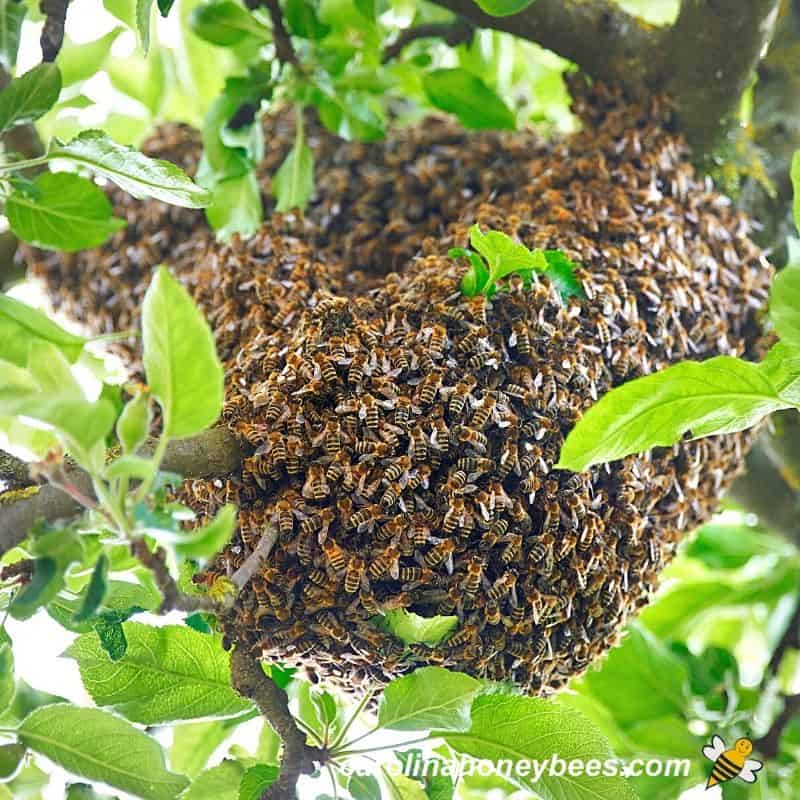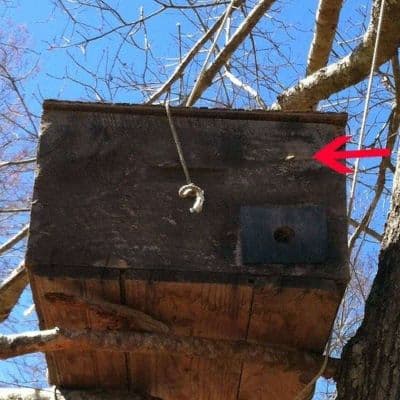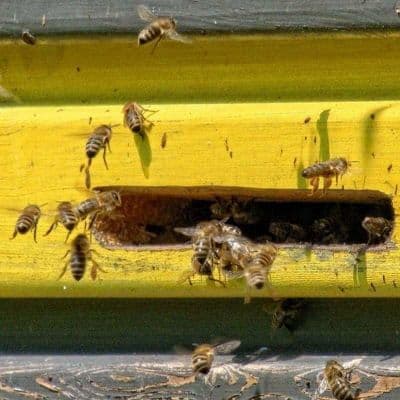Scout Bees – Why They are Important
Every task in the colony is important but none more than that of scout bees. These worker honey bees are responsible for finding new home locations for future swarms and searching out food sources. Scouting bees only represent a small percentage of colony members but they save the colony many wasted miles of flight.

Members of a honey bee colony are well known for their efficient way of working. Colony organization of this social organism ensures that each one of the worker bees are busy doing their part for the hive.
Honey Bee Scouts
Foragers are the female workers responsible for collecting things the hive needs. They are the older members of the colony. Thousands of workers are needed to bring in the resources necessary for daily hive life.
They also must store honey and collect pollen for Winter. This coordinated effort would not work if each bee had to find food alone.
To aid in the goal of having a productive system of finding what the colony needs, a percentage of colony members serve as bee scouts.
Role of the Scout Bees in Nectar Collection
These workers “scout around” for rich nectar or pollen sources. When an abundant food source is found, they return to the hive to share the news.
Inside the hive, the scout bee dances to direct other foragers to the food source. Scout bees’ dancing movements are performed inside the colony on the surface of the comb.
They show foragers the general direction and distance to food. In time, more and more of the foragers will visit the food and return to dance and tell others.
This “bee telegraph” system continues throughout the warm season. With scouting behavior continuing to seek out more and more resources.

These bees travel long distances from the hive when needed. The way dance movements are used to share information is a bee fact – that is unique to honey bees.
This efficient system of locating food promotes colony productivity and helps bees make honey to store for Winter. But, locating food is not the only role of honey bee scouts.
What do Scout Bees Look Like?
How do you know if you are seeing a scout in the field? You probably will not be able to determine their status. Scout bees look the same as any other worker bee. It is their behavior that is different.
You might see a bee flying around a tree trunk investigating any knot holes or openings. She seems to be searching for something – not like normal behavior of foraging bees.
When you see a honey bee near a swarm trap you have set up, or an opening in the siding of your home (Oh No) – it’s time to pay close attention.

Role in Finding Nest Sites
Honey bee colonies have a remarkable method of making more bee families. This is reproduction at the colony level. It is called honey bee swarming.
In this somewhat risky procedure, roughly half of the hive population leaves to form a new colony in a new location. The rest of the bee family remains in the mother hive to rebuild the work force.
Scout bees play a critical role in swarming. The new colony needs to have an appropriate nest site to build their new home. The bees make careful preparations in the weeks before casting a swarm.

Evaluating Possible Nest Sites
Any hollow of an appropriate size is a candidate for the new colony. And bees choose spaces of all sizes! Though a volume of 40-50 litres (size of one deep brood box) is a common choice.
Most beekeepers like to use that size of bee box for bait hives when they hope to attract a swarm of bees. They also add swarm lure to entice visiting bees to take a closer look.
Scout bees are attracted to the smell of old honeycomb. This results in a good nest site being used over and over again as the years go by.
While bee scouts may be on the lookout for possible nesting sites at any time, the search for a new home becomes more serious right before the swarm emerges.
It is not uncommon to see scouting behavior performed by many bees at a bait hive before a swarm arrives.
Selecting the New Site
When the swarm leaves the hive, they often hang in a clump in a nearby tree or bush. During this transition time, scout bees work to finalize a home choice.
Small groups of bees are recruited to visit the best new locations. If they like the new site, they will return to the swarm cluster.
Scout bees communicate through dances even on the surface of the ball of hanging bees. (It is fascinating to watch if you ever have the opportunity to observe a swarm up close.)
The majority of dancing bees must agree before the swarm takes flight. Sometimes bees “get stuck”, if a decision can not be made, the swarm remains in the transition spot longer.
This scouting behavior of the honey bee swarm can continue for hours. Bees fly back and forth between the hanging cluster and the top site choices.
How Scout Bees Get the Swarm Moving
Researchers do not understand exactly how the bees reach an agreement. But eventually, most of the scouts will be dancing for the same site.
When it is time to lead the mass of bees to the new home, the dancing stops. The scouts work their way to the inside of the mass of bees. Using their flight muscles, they produce a high-pitched beep at their sisters.
All this activity causes the temperature of the cluster to raise. Suddenly, the whole swarm will break apart into the air. Scout bees and their recruits will fly slowly around and through the flying mass of bees.
This directs flight towards the chosen new home site. The whole swarm flies off at the speed of about 7-8 mph.
Swarm Is Directed Inside New Home
Upon arriving at the new home location, scout bees will surround the opening and “scent” using their nasonov glands.

This encourages their sisters to move inside. A large honey bee swarm can enter the new location in a brief amount of time.
Occasionally, the swarm will reject the site chosen by the scout bees. When this happens, the swarm leaves the location and goes to another secondary site.
FAQs
Scout bees are female. They are physically the same as any other workers in the colony.
Scout bees look the same as any other worker bee. It is their behavior that is different – instead of collecting they hover around from one place to another. They appear to be looking for something.
A typical swarm of about 10,000 honey bees will usually contain 400-500 scout bees. The swarm leaves the parent hive and hangs in a cluster nearby.
Yes, scout bees continue to evaluate potential nest sites even after the swarm has left the hive. They must reach a collective agreement among the majority of scouts.
A Final Word
A honey bee colony is a large social organism. Individual members work together for the good of the colony as a whole. Using scout bees to search out needed resources is a valuable way to avoid wasting time and energy. Colonies must grow and prepare for Winter. Let’s hope our scout bees make a good decision and chose a good location for the colony.

